Special Report
17 Surprising Similarities Between Humans and Dolphins

Published:
Last Updated:

For thousands of years, people have been fascinated by dolphins. In ancient times, seafarers developed a relationship with these aquatic creatures. Dolphins were playful, intelligent, and social. They’re mammals and they bear their children alive; they seemed to be a lot like us.
The ancients may have wondered why humans and dolphins had certain similarities, but they didn’t have the knowledge to support their conjecture. However, modern science has provided many answers. 24/7 Tempo has reviewed sources such as smithsonianmag.com to compile a list of the surprising similarities between humans and dolphins.
Click here to see 18 ways in which humans and dolphins are alike.
Science has helped explain why dolphins are playful (there is a purpose to much of that activity), their intelligence (bigger brains), and their social skills (sophisticated community).
But other discoveries have been surprising. Veterinarians at Texas A&M University have learned that we are closer to dolphins genetically than we thought. Researchers in Ireland found that dolphins speak in different dialects. The bone structure in our ams is similar to the flippers on our marine friends. We both breathe through nostrils, though the dolphin nostril is on top of its head. Dolphins may not have an opposable thumb, but they are facile enough to use sea sponges to protect their snout while searching for food. Some scientists even think there are gay dolphins.
We may share certain characteristics, but humans have not been the best of friends to dolphins. Their numbers have been reduced because of urbanization, pollution, widespread use of gillnets by fishermen and, of course, human-caused climate change. Some species are among the 27,000 species are endangered right now — and these are other animals humans are driving to extinction.
We’ve already lost one dolphin species in recent years, the baiji or Yangtze River dolphin, which is believed to be the first dolphin species that humans have made extinct.
Some people have answered the clarion call to protect our oceans and the marine life that inhabits them. Among them is Richard O’Barry, a trainer for dolphins for the beloved 1960s TV-series “Flipper.” He leads the Dolphin Project that opposes dolphin exploitation and slaughter. And he is not the only one — these are 30 heroes fighting to save our oceans.

1. We call each other by name
Researchers believe pregnant dolphins sing their names to their unborn, just as assuredly human moms-to-be do to their unborn. The mother imparts her name through a signature whistle and increases its use two weeks before birth, which scientists believe starts the learning process for the calf in the womb.
[in-text-ad]

2. We spend a lot of time playing
People of a certain age remember the frolicking dolphin Flipper on the television series of the same name. And while TV watchers were entertained by the dolphin’s antics, researchers believe not all of it is intended to be playful. They think these behaviors have a purpose. Dolphins racing after each other might mean they are fighting. Leaping out of the water at high speeds could mean the dolphins are coming to the surface to breathe. Leaping also may be a faster way to travel. Even so, dolphins do exhibit certain play patterns, like riding waves close to boats, passing seaweed from one to the other, and capturing and releasing other marine life.

3. We talk in dialects
Scientists have discovered that dolphins, like humans, speak in dialects. Researchers in Ireland analyzed about 2,000 dolphin whistles in the Shannon Estuary and Cardigan Bay in Wales and determined that the whistle forms in each place were not the same, strongly suggesting the dolphins spoke in a local dialect. Dolphins use echolocation — various sounds used to find prey, locate other dolphins, and track predators.
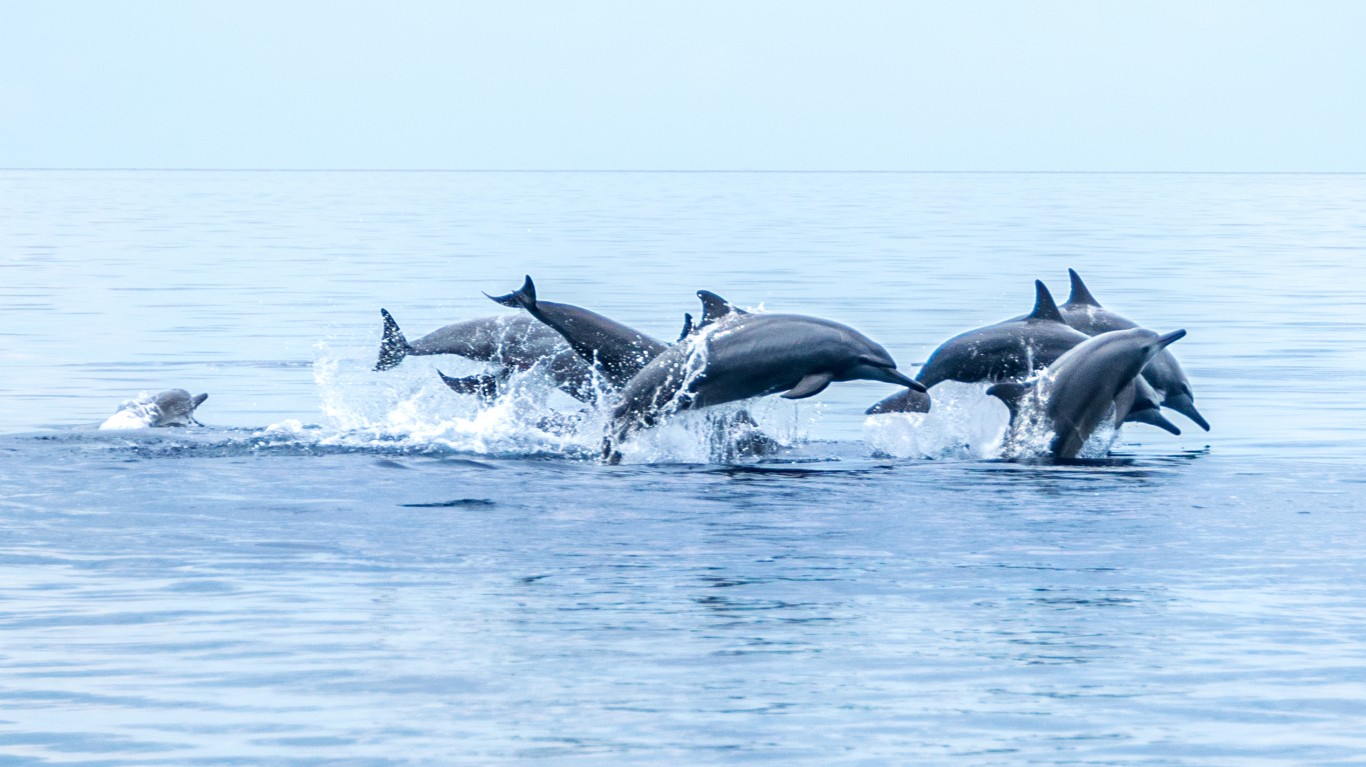
4. Some live in small groups
The size of the pod varies, but most groups are between two and 30 members. In areas where there is plenty of food, super pods of dolphins can be as big as 1,000 members, which can also help to fend off predators.
[in-text-ad-2]
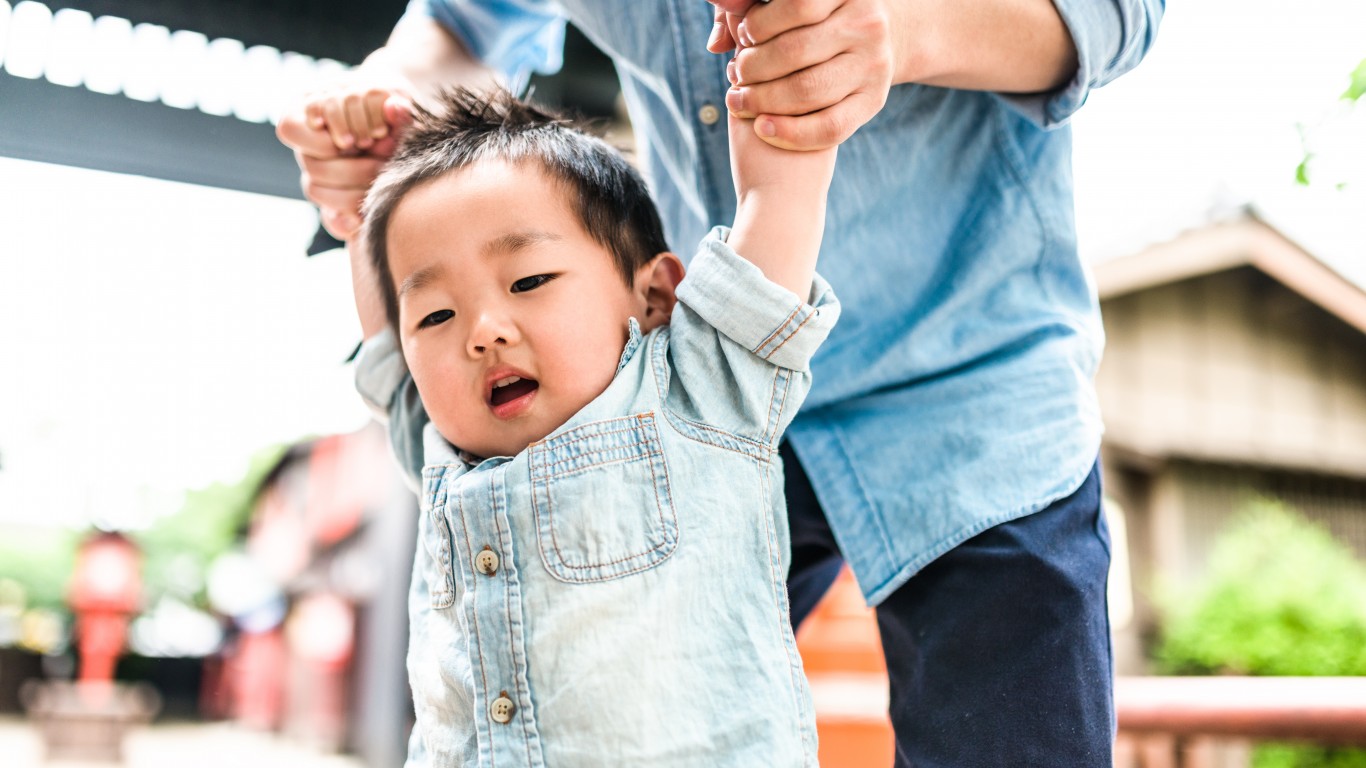
5. Adults raise the young
Gestation in dolphins is between 10 to 17 months, depending on the species. After the calf is born, the mother nurses it for up to two years and the calf remains with the mother until it reaches puberty, between 5 and 10 years old. The mother’s bond with a male calf is usually very strong and continues until the calf is 6 or 8 years old. The mother and the calves join groups for protection. The male dolphins play no role in this group. They form alliances with other male dolphins that can last for as many 20 years.

6. They engage in cooperative hunting
Dolphins are cooperative hunters and those skills are passed along to younger members of the pod. In a paper written by the Royal Society in 2005, researchers in Florida observed feeding behavior in two groups of bottlenose dolphins and saw one individual, or “driver,” herd fish toward the rest of the pod of dolphins.
[in-text-ad]

7. We have sleep genes
Yes, dolphins sleep, but not the way we do. For land mammals, sleep means partial or complete unconsciousness, muscle inactivity, and a shutdown of the senses. For dolphins, their sleep is called “unihemispheric slow-wave sleep.” That means a dolphin will shut down one side of its brain and close its opposite eye. The other side of the brain keeps a lookout over its environment — which is much more hostile than ours — and controls breathing.

8. Our genomes are virtually the same
Veterinarians at Texas A&M University compared the chromosome makeup of humans and dolphins and found that we are surprisingly alike. David Busbee, a veterinarian from Texas A&M, said the genomes of humans and dolphins were virtually the same. The researchers compared fluorescently painted slides of human chromosomes with similarly rendered slides of dolphin chromosomes. Dolphins hold many of the same chromosomes as humans.

9. We form strong social bonds
As they grow, young dolphins form strong bonds with their pod and practice the skills they need to survive. Like their human counterparts, as part of their socialization, dolphins often participate in playful games, such as chasing each other, and they explore their habitat with their peers.
[in-text-ad-2]

10. The females nurse their babies
When female dolphins give birth, the mother cuts the umbilical cord and brings the baby to the water’s surface to breathe. The adult female produces a thick milk and nurses the baby calf for six months to two years, though this may vary by species.
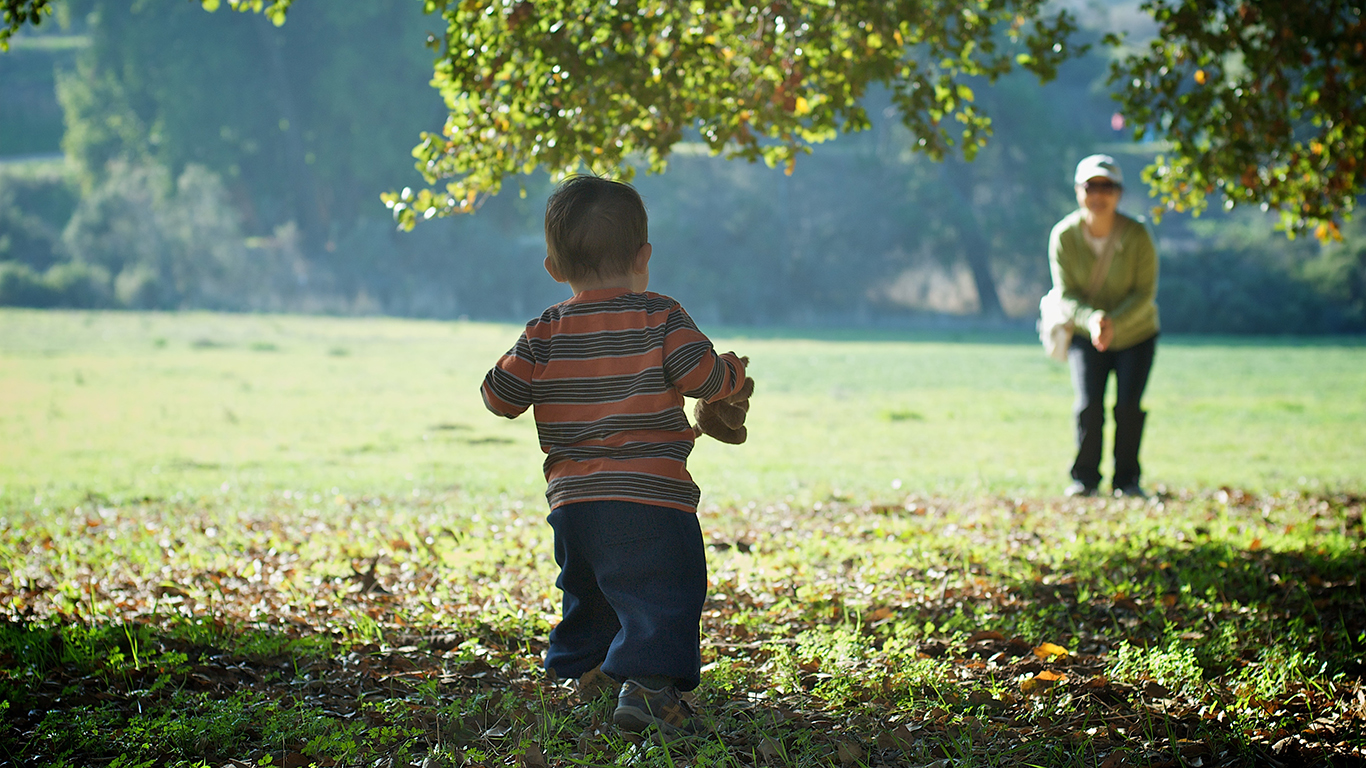
11. We demonstrate skills to our young
Adult dolphins pass on various skills to their offspring like humans do. In their aquatic environment, young dolphins learn to discern the particular characteristics within their group and acquire survival skills, such as identifying fish, avoiding capture, and being aware of predators like sharks. Researchers have observed bottlenose dolphins showing calves how to hold a sea sponge to shield their snout while foraging for food.
[in-text-ad]
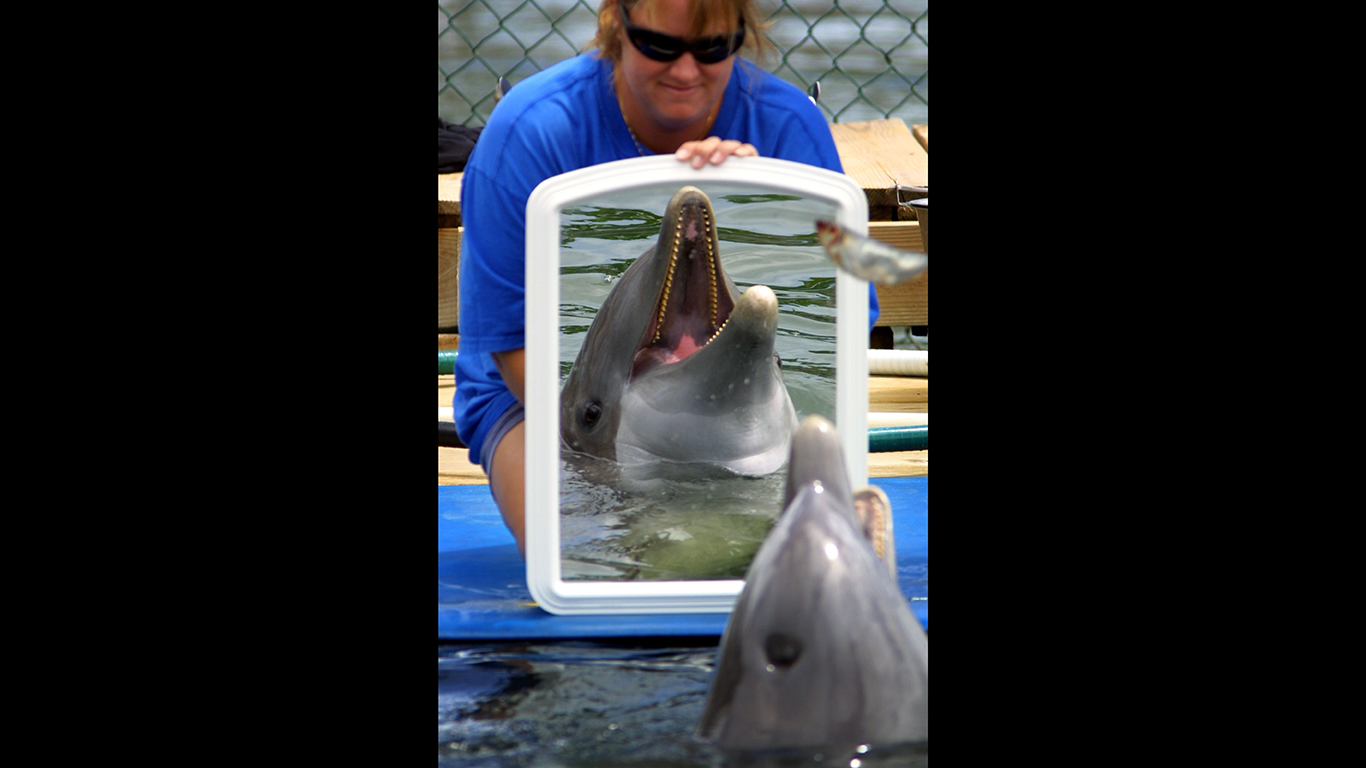
12. We are self-aware
Researchers discovered that dolphins become self-aware at an earlier age than humans and chimpanzees. Investigators studied two young dolphins at the National Aquarium in Baltimore and watched how the mammals interacted with their images in a mirror. One dolphin looking at its image showed behavior that indicated it recognized itself at 7 months old, according to a study from Hunter College of the City University of New York. Humans first show self-directed behavior at a mirror between 12 and 15 months of age and chimps at a later age.

13. Human-dolphin lifespans
The lifespan of a dolphin depends on the environment and the kind of species, though the average age is between 15 and 16 years. Some bottlenose dolphins can live up to 40 years, which translates into about 100 for humans. The oldest dolphin in captivity reached 50 years old. Back in the mid-1800s, a 5-year-old person was expected to live about 55 years. Life expectancy at birth in the early 1900s was around 50 years.

14. Our fetuses look very similar
While unborn babies of humans and dolphins are in the uterus, they both have a tail, though for humans that is only briefly. Scientists believe these so-called protrusions are a legacy of genetic material from ancestors.
[in-text-ad-2]

15. Our limbs are similar in bone structure
There are certain anatomical similarities between humans and dolphins and these include similar bone structure between our ams and the flippers on dolphins. Dolphin flippers have five finger bones, also called phalanges. And like us, they have carpals, radius and humerus bone, the latter of which is similar to a dolphin’s pectoral fin.
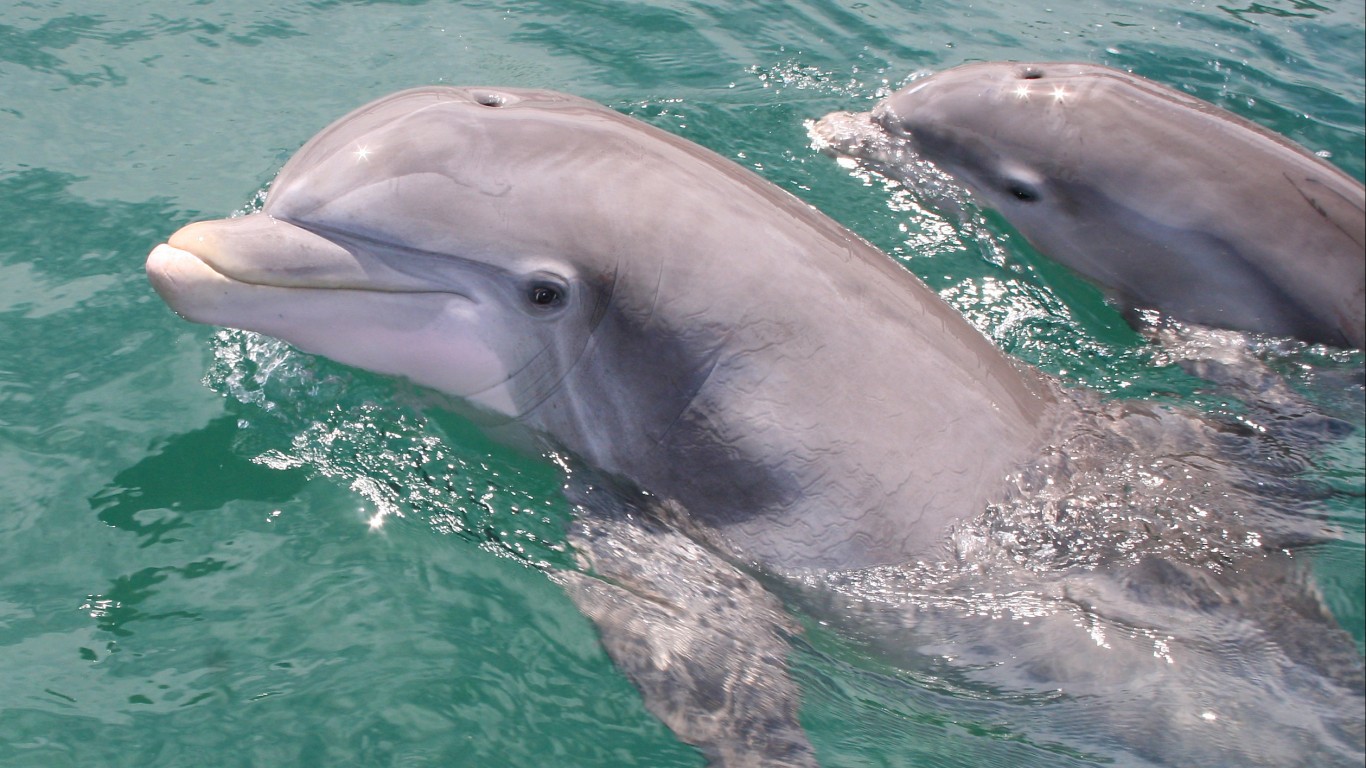
16. Our noses have two nostrils
Even though they live in the ocean, dolphins need to come to the surface to breathe. Dolphins breathe through blowholes that are on top of their bodies. And similar to a human nose, a dolphin’s blowhole is divided into two nostrils. You can chalk up the positioning of a dolphin’s nostrils to evolution.
[in-text-ad]

17. Mothers talk to unborn babies
Pregnant women are told to talk and sing to their unborn child as a way to bond with the baby. Dolphins do a version of that, too. Scientists say dolphin moms apparently sing to their unborn offspring in the form of a “signature whistle” that the mammals use to identify each other. Once the calves are born, they create their own whistle.
The thought of burdening your family with a financial disaster is most Americans’ nightmare. However, recent studies show that over 100 million Americans still don’t have proper life insurance in the event they pass away.
Life insurance can bring peace of mind – ensuring your loved ones are safeguarded against unforeseen expenses and debts. With premiums often lower than expected and a variety of plans tailored to different life stages and health conditions, securing a policy is more accessible than ever.
A quick, no-obligation quote can provide valuable insight into what’s available and what might best suit your family’s needs. Life insurance is a simple step you can take today to help secure peace of mind for your loved ones tomorrow.
Click here to learn how to get a quote in just a few minutes.
Thank you for reading! Have some feedback for us?
Contact the 24/7 Wall St. editorial team.